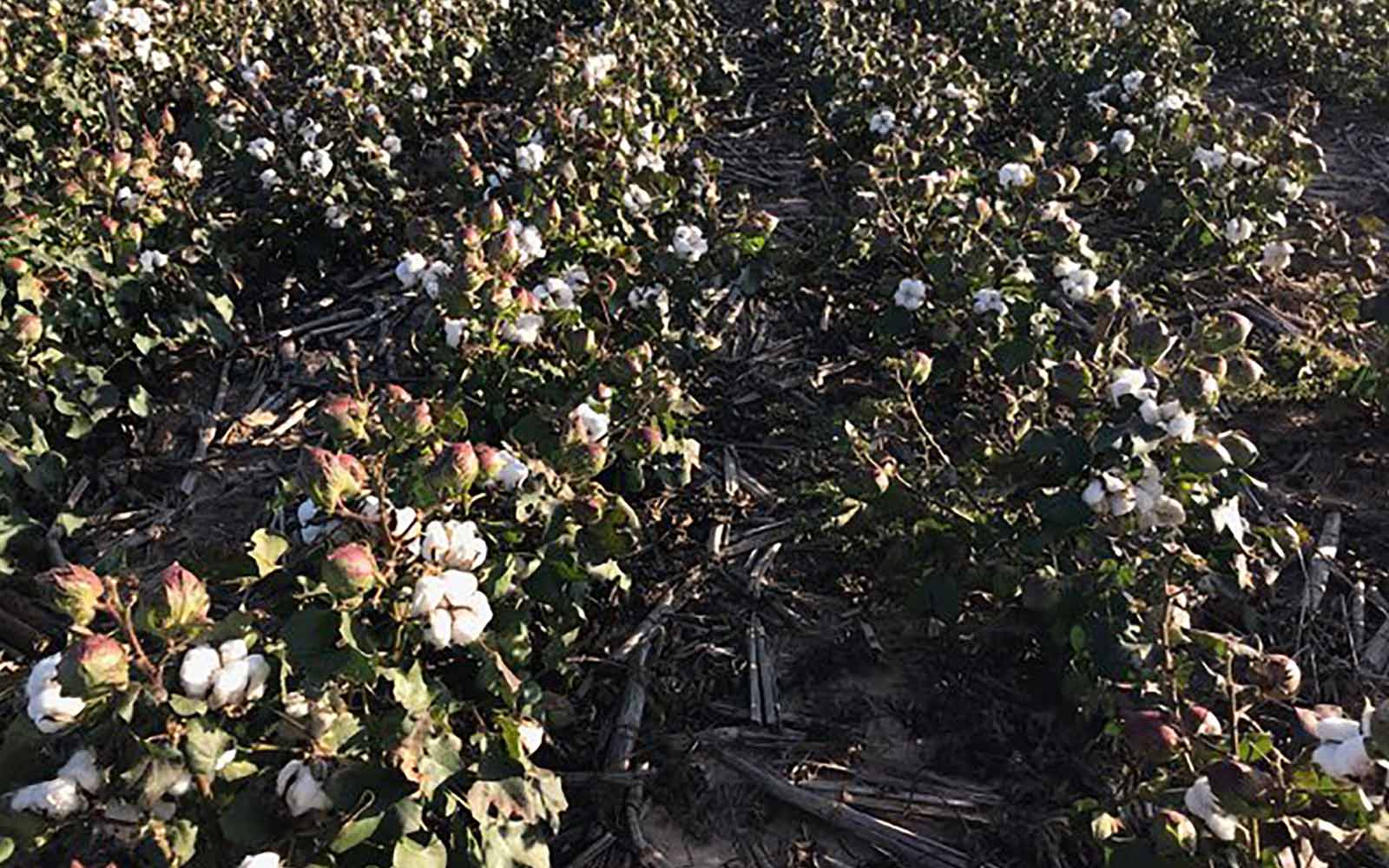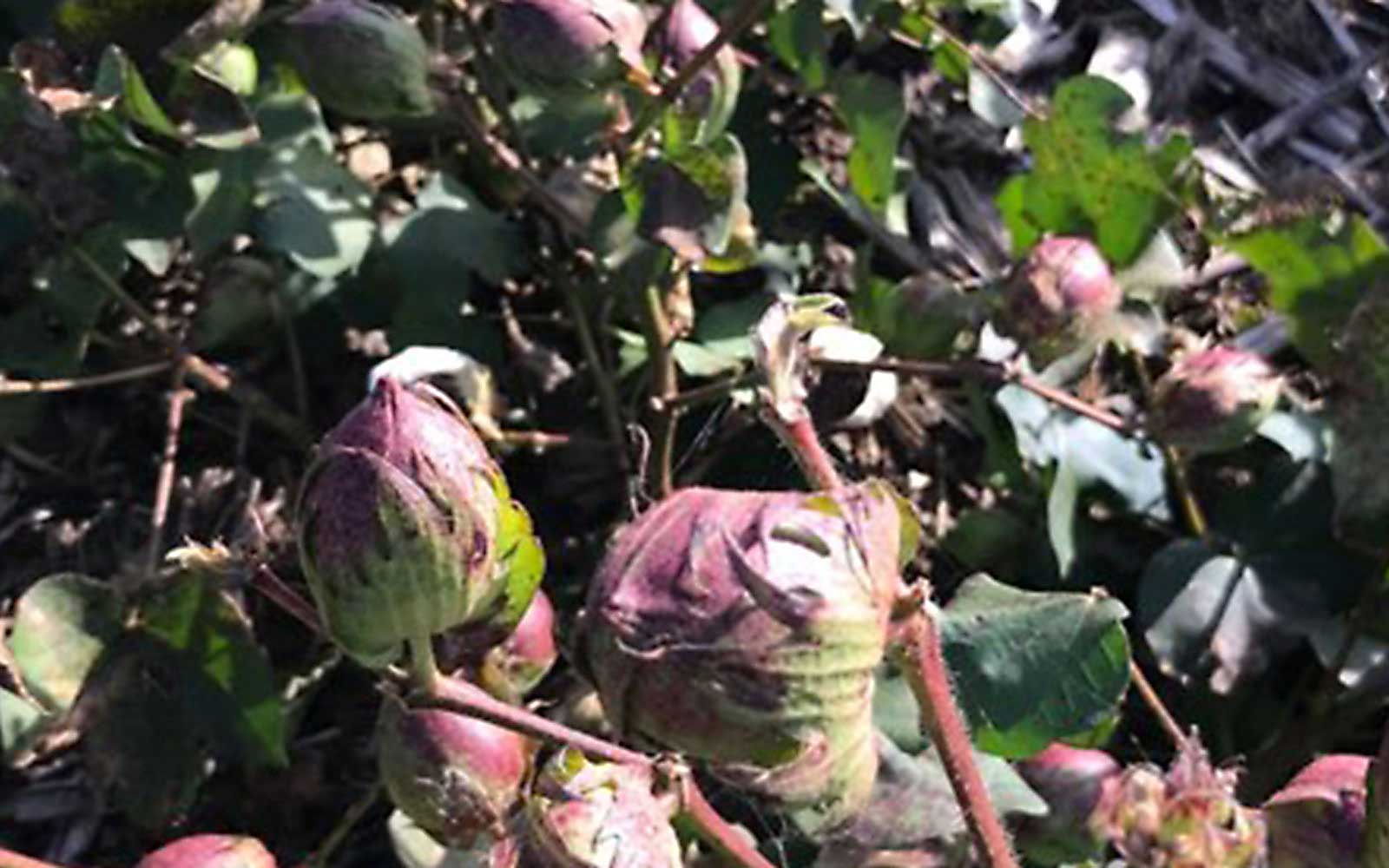For cotton growers in the Texas high plains, Oklahoma and Southern Kansas, cotton farming has an especially challenging circumstance – beating the freeze.
Plant damage can be significant after a freeze, and with an average freeze date of mid-October, it’s a race to defoliate the leaves and start stripping the bolls. Tim Ballinger, agronomist and crop consultant, has developed a cost-effective preconditioning process to get ahead of the cold temperatures and increase the grade. With more than 30 years in the industry and a decade using Folex® Cotton Defoliant, Ballinger has advanced his technique to help ensure a higher grade for his growers.
FOLEX® COTTON DEFOLIANT

Ballinger applies Folex as a preconditioned application in early October to remove part of the canopy; this allows mother nature to come in and open the immature bolls.
With a short growing season of approximately 170 days from plant to strip, applying Folex Cotton Defoliant early to a cracked boll at a low end use rate will drop the top third of the canopy. This gives sunlight and wind the opportunity to influence the plant and accelerate maturity. He then makes a follow-up application with ethephon and Folex around mid-October to complete the process.
“Folex is the perfect leaf drop,” Ballinger says. “It just falls right off the plant. There's no killing that leaf, that leaf is just as green as it was on the plant, but with Folex, it just drops.”
Ideally, Ballinger would like to let the plant mature itself. “We just don’t have that opportunity here; nature sneaks in way too fast,” he says. “This process allows us to move into the next step and get our crop to the gin.”
This application technique is specific to Ballinger’s territory in Texas, and ultimately, helps his growers increase the cotton’s grade by having a more mature boll that can be stripped before the cold comes.
TEXAS HIGH PLAINS
With the Texas panhandle dealing with varying elevations and weather conditions, temperatures can be a lot cooler in certain places, creating challenging circumstances for Ballinger. Located in the far north of the panhandle, about 45 minutes north of Amarillo with an elevation of 3,661 feet, Ballinger says at a certain point, his area is not accumulating any more heat units.

Many unfortunate events can occur to a crop, but a freeze can be especially disheartening for growers. “We try to get in and have everything mature and ready, so we can get out into the field and run through the whole process before that freeze comes,” Ballinger says.
Growers in the southern plains of Texas have been growing cotton for a long time, and some told Ballinger there is no way growers would get enough heat units to grow cotton every year. “But we have been able to grow cotton, and we’re doing very well,” he says. “We’ve got really nice grades up here, and we’re proud of them.”
As an independent agronomist and farmer himself, Ballinger strives to get the best outcome for his clients and himself.
Field Advice
Knowing when to defoliate is an important decision for growers and choosing the right time can be the key to optimized yield and quality. “It’s like playing chess with mother nature,” he says. Leaving the crop longer to mature by itself would be ideal, but rarely in these specific areas does the freeze hold off. “The challenge is knowing when to pull the trigger, and if you split your Folex application, things will work out for you,” he says.
Ballinger also suggests being mindful of water usage, especially with growers in his Eastern territory. “What happens pretty frequently, when growing cotton, is these guys put on too much water,” he says. “By overwatering cotton, all it creates is lusher growth.” Additional growth makes it challenging for nature to do its job in maturing the boll.
Ballinger’s approach to cotton farming in these areas protects the grower and helps contribute to cotton’s grade. “If you’re getting cold temps, I really challenge you to try this program and see if it benefits you and your grades.”
Interested in this preconditioning process? Contact your local AMVAC rep for more information.
©2020 AMVAC Chemical Corporation is a wholly owned subsidiary of American Vanguard Corporation. All rights reserved. AMVAC, Folex and respective logos are trademarks owned by AMVAC Chemical Corporation.
Important: Always read and follow label instructions. Some products may not be registered for sale or use in all states or counties. Please check with your state agency responsible for pesticide registration to ensure registration status. All products are EPA registered.
